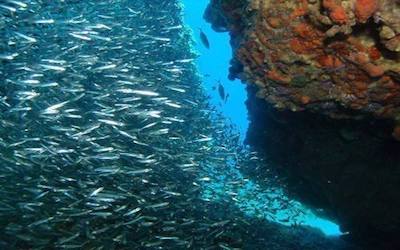PTE考生目前最大的问题之一就是练习题缺乏。除了有限的基本官方书(PLUS,Testbuilder, OG)之外就没有题了。很多英语基础不是很扎实的同学很难找到练习材料。悉尼文波雅思PTE培训学校专门为澳洲,尤其是悉尼、墨尔本的PTE考生准备了适合PTE听力阅读练习的科学60秒。各位PTE同学可以练习PTE听力中的summarise spoken text和PTE口语中的retell lecture,练习记笔记技巧和复述。
听力内容:
60秒科学节目(SSS)是科学美国人网站的一套广播栏目,英文名称:Scientific American – 60 Second Science,节目内容以科学报道为主,节目仅一分钟的时间,主要对当今的科学技术新发展作以简明、通俗的介绍,对于科学的发展如何影响人们的生活环境、健康状况及科学技术,提供了大量简明易懂的阐释。
This is Scientific American — 60-Second Science. I’m Steve Mirsky.
“So here’s the first of the alewives, all silvery, they’re all about the same size,
you can’t tell the boys from the girls. These will be the first.”
Stephen Gephard, fisheries biologist with the Connecticut Department of Energy and Environmental Protection.
Gephard brought 400 alewives down from the Nutmeg state to be released
into the Bronx River on the grounds of the Bronx Zoo on April 20th. The Bronx River was once
so polluted that it was called an open sewer. But it’s been cleaned up to the point where it can now
once again support these fish, which were common here in the 19th century.
“Alewives are herring, they’re kind of like a miniature shad.” John Waldman
is an aquatic conservation biologist at Queens College, who was on hand for the release.
“They’re born in fresh water, they rear for the first year in freshwater then
go to sea, spend a few years growing larger and then return to the river they were born in,
much like salmon or sturgeon or shad. It’s called an an adromous life history. And this river appears to have a small relic run that never really expanded because it was limited by the habitat.”
“And now there’s a fish ladder on the first dam and these fish that are being
stocked today, 400 alewives…and the idea here is that if they spawn in this section, the young will kind of imprint on this area, run downstream and then return when they’re old
to spawn several years from now and want to go over the fish ladder.”
“In the meantime, several fish have used the fish ladder on their own this week
that were from wild fish that were existing as a little relic stock, I believe, in this section of
the river, so between the two I think the future looks very promising to have
a much larger run.”
“The water here behind the Bronx Zoo is just perfect for alewife spawning,
it’s very slow moving, it’s just what they like. And there’s a series of dams above this
first dam that are probably going to have fish ladders in the future, too. And if we get them
all online working, this little river that flows through the heart of the Bronx
could become a major alewife producer, which is kind of fun in its own right, to have such an urban location
producing these wild fish, but it also is a great tie to the ocean.”
“Alewives and other bait fish really drive the marine food chain, and this is
a contribution to our greater coastal waters. So I’m very excited by the prospects of
this restoration.”
Gephard: “Alright, we gotta get ’em in the water.”
For the Scientific American — 60-Second Science Science. I’m Steve Mirsky.
墨尔本悉尼霍巴特文波PTE原创首发
更多精彩请持续关注微信wenbo_tv3。





